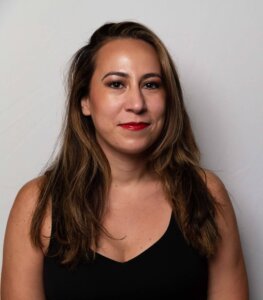Poland and Germany have long taken opposing approaches to Holocaust remembrance. Touring them with Doug Emhoff, the difference was stark
In Europe with the second gentleman, I saw that it’s crucial to take Holocaust remembrance personally
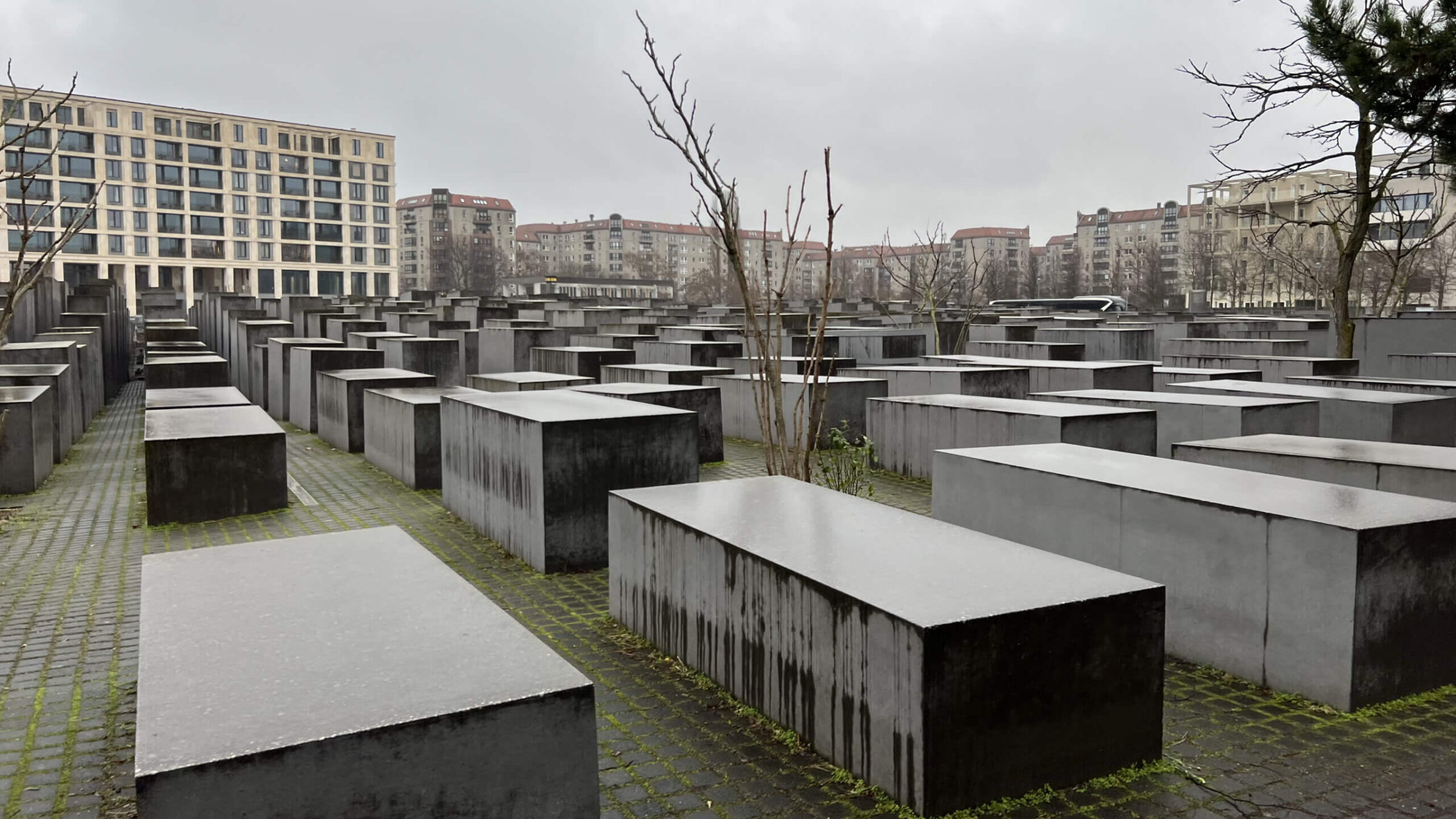
Berlin’s Memorial to the Murdered Jews of Europe. Photo by Laura E. Adkins
BERLIN — It is one thing to acknowledge the dark parts of your country’s history. It is quite another to reckon with them.
I’ve spent the past six days traveling through Poland and Germany with Doug Emhoff, the second gentleman of the United States, as he’s toured sites of Holocaust atrocities and engaged in a series of conversations about rising antisemitism.
And at each stop, whether walking through the soggy woods in Gorlice, Poland — where Emhoff has family roots — or down the immaculate streets of Berlin, I tried to make sense of what had happened here.
It may sound trite: We know what happened, and it was bad. The Holocaust decimated European Jewry. Six million Jews, and millions of non-Jews, were murdered. The population — and in many ways, the Jewish people — have never recovered.
In Poland and Germany, I witnessed two dramatically different ways of dealing with these facts. Poland was home to some of the deadliest concentration camps during the Holocaust, but its approach to remembrance makes the brutal nature of the Nazi regime feel distant and foreign. In Germany, the horrors of the past are an inescapable part of the present.
Berlin especially makes open acknowledgement of the sins of the past, both collective and individual. There are abundant memorials to victims of the Holocaust and markers of past Nazi sites throughout the city. While there, Emhoff participated in solemn conferences, where leaders from across Europe discussed strategies to combat antisemitism.
German authorities have worked to be painstakingly honest about how their society arrived at a point at which the Holocaust was possible. At the Topography of Terror Museum, which sits on the site of the former SS headquarters, a gripping visual timeline of Nazi rule takes visitors through the dramatic escalation of nationalist frenzy and calculated violence during the 1930s and 1940s.
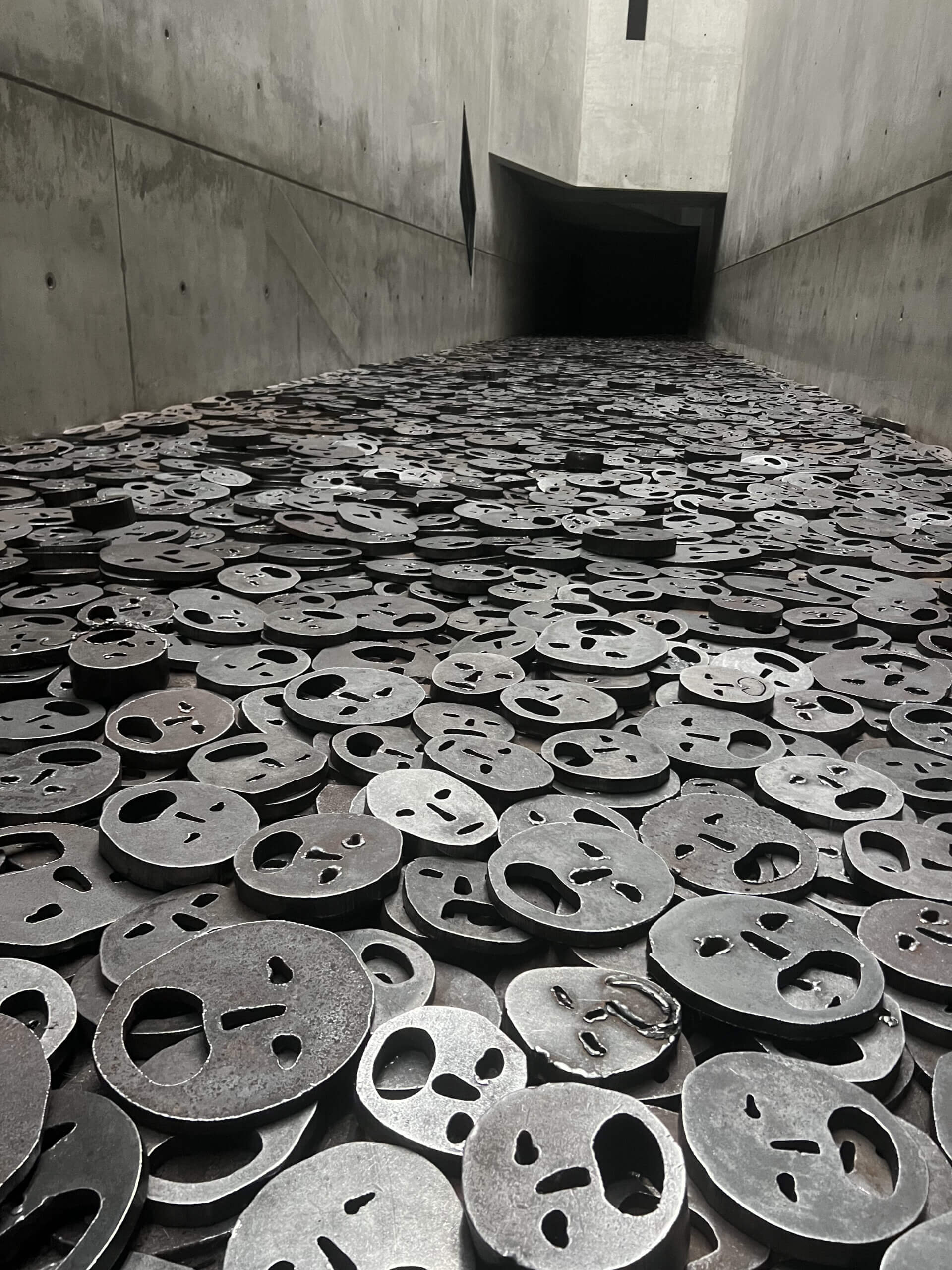
What struck me most deeply was the efficient organization of it all: this was no accidental genocide. Everything was planned to get rid of Jews, the Roma people, gay people, and dissidents as quickly as possible. And it was effective. Of the estimated 30,000 to 40,000 Jews that reside in Berlin, an estimated 90% emigrated from the former Soviet Union. Virtually no descendants of the Jews who thrived here before the Nazi reign of terror remain.
In Germany, you feel as if you’re standing in the clearly defined and omnipresent shadow of those who came before you. In Poland, you’re constantly chased by ghosts. There are plenty of markers of the country’s dark past — well-preserved concentration camp sites, Holocaust museums, buildings bearing Hebrew writing yet lacking any Jews.
But Poland’s leaders have consistently avoided acknowledging the antisemitism that still festers there, or that the Polish people were anything but the Nazi’s victims. (It’s true both that Polish citizens suffered intensely under Nazi occupation, and that many Poles were complicit in turning in their Jewish neighbors.) Publish the words “Polish death camps” and you’ll receive a formal letter of reprimand from the government.
At a Holocaust Remembrance Day commemoration in Birkenau, I felt that lack of self-awareness acutely. While the ceremony itself was held outside, on the site of demolished barracks, the press and translation room was set up in an outbuilding room equipped with ovens. Seeing a coat rack casually set up next to them filled me with rage.
The building isn’t a crematorium, and they weren’t the ovens used to burn the bodies of those murdered in the camp. But their significance as a symbol is unmistakable — as is the callousness of treating the room that houses them as just another space to store extra stuff. It felt as if the officials in charge wanted the credit and gravitas that accompanies Holocaust remembrance, without grappling with the gravity of what actually happened in this place.
Mourning the past, preserving the present
Tuesday, as Emhoff prepared to fly back to the United States, we visited Berlin’s New Synagogue, which was built in 1866.
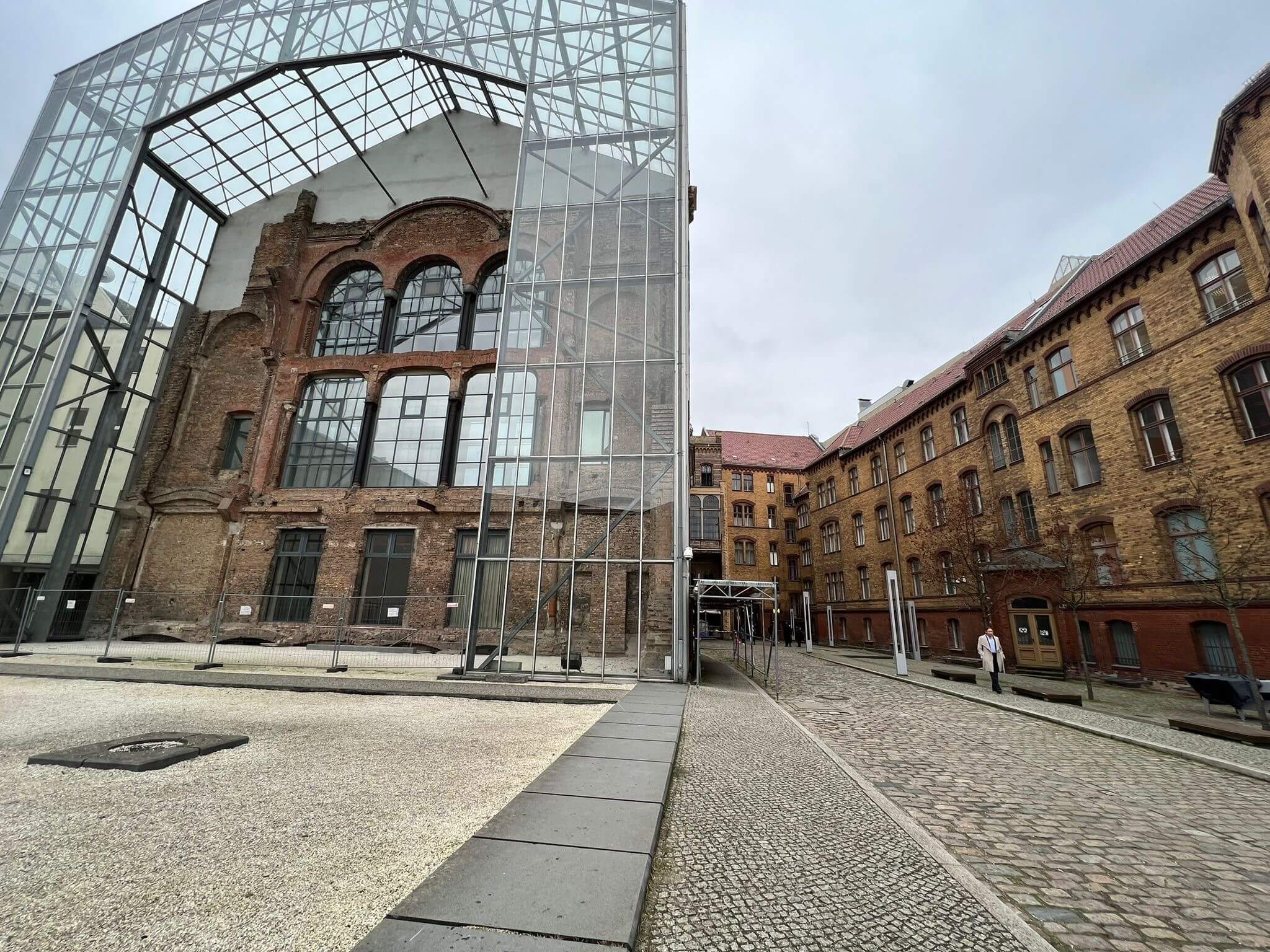
The once-opulent synagogue was partially destroyed by Allied bombing on Nov. 22-23, 1943, and has not been fully rebuilt. The vast majority of what was formerly the main sanctuary was destroyed: Only rows of columns and an expanse of gravel remain. The space in which today’s 100 or so congregants pray, a plain room up several flights of stairs, takes up just a fraction of the building. The ark is not ornate. It’s a simple wooden box on wheels, covered with a simple white curtain.
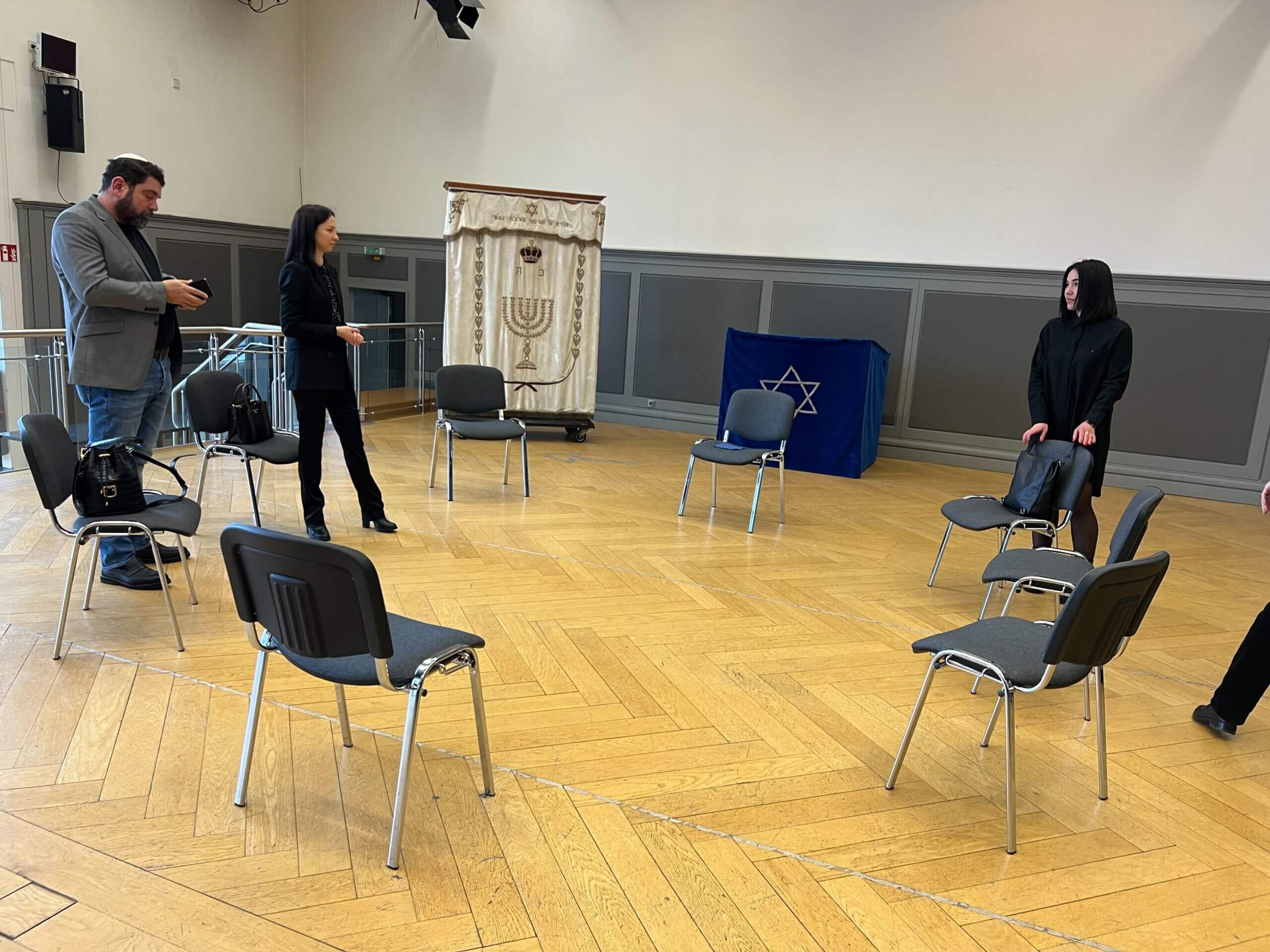
The synagogue’s dual functions — monument to the past, and home to a small, committed set of contemporary worshippers — make it a particularly emotional memorial to Germany’s once-thriving Jewish community.
When we teach younger generations about the Holocaust, we usually focus on the brutality: the humiliation, the violence, the propaganda and the killing. That’s the focus I saw in Poland: a sense that it’s honorable to remember these terrible things, so long as remembrance doesn’t extend to an admission of culpability.
It’s Germany’s approach, exemplified in the New Synagogue, that better understands what the real point of remembrance is. There are supposed to be so, so many more of us. Seeing the shul, once a seat of vibrant Jewish culture and life, now preserved in a perpetual state of violent incompleteness, made me want to weep.
